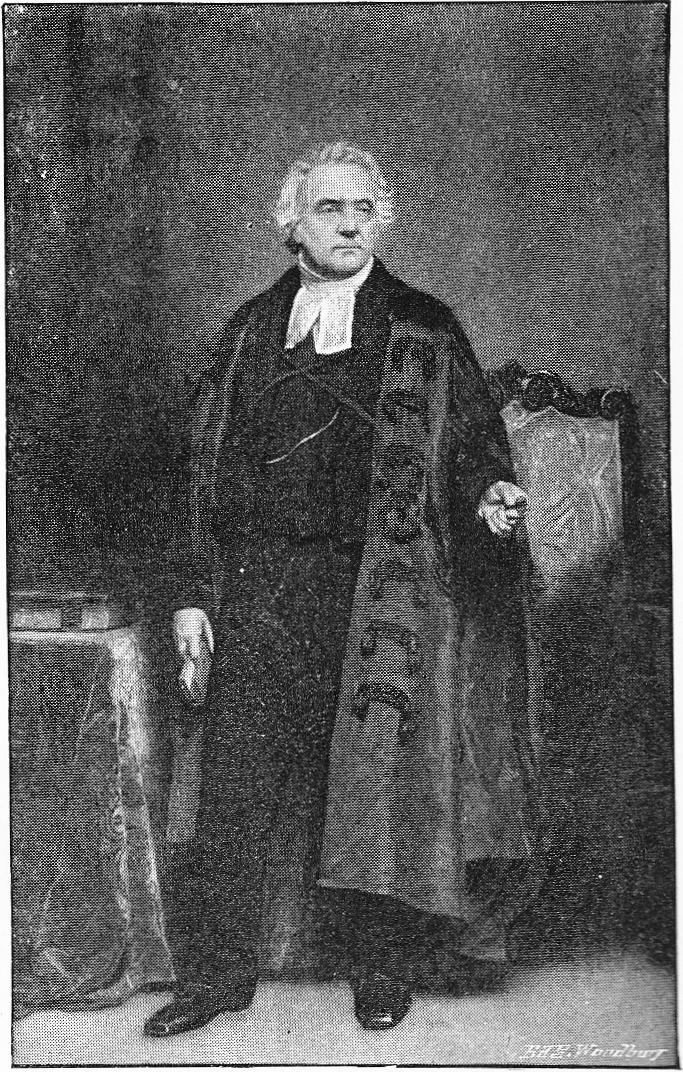|

HER
MAJESTY RECEIVING KING LOUIS PHILIPPE AT WINDSOR
CASTLE, October 8, 1844.
Louis Philippe was the first French Monarch who ever
set foot in the British Islands on a visit of peace.
The. Prince Consort met him at Portsmouth and
accompanied him to Windsor, where the Queen awaited
him. At the banquet "he talked to me," writes the
Queen, "of the time when he was in a school in the
Grisons, a teacher merely, receiving twenty pence a
day, having to brush his own boots, and under the
name of Chabot." On the following day he was
installed Knight of the Garter. He left England on
the 13th.
The
upheavals which took place simultaneously in the
Established Churches of England and Scotland, during
the early years of Victoria's reign, and so
profoundly stirred religious sentiment in both
countries, can scarcely have arisen from independent
centres of disturbance, though the connection
between them is not easy to trace. They were the
outcome of an awaking from the condition of
inactivity and routine into which both these
Protestant Churches had passed after the agitating
events of the seventeenth century, and an attempt on
the part of the more active intellects, both in
clergy and people, to restore ecclesiastical
authority and discipline.
The movement in England has been reckoned by the
late Cardinal Newman, himself one of the leading
spirits in it before his secession to Rome, as
beginning with a sermon preached by John Keble in
the University pulpit, 1833, afterwards published
under the title " National Apostasy." About the same
time began the publication of " Tracts for the
Times," conducted by a group of earnest, active men,
including Newman, Keble, Pusey, and others,
advocating a revival of High Church observances as a
means of quickening spiritual life and a restoration
of the patristic doctrines and practice in Church
government and services. From these tracts the
movement became known as " Tractarian," till in 1841
their publication came to a sudden end by reason of
the famous Tract No. 90, written by Newman, and
deeply offensive to Protestant feeling in England.
Newman joined the Church of Rome in 1845, and
thereafter the term " Puseyite " was popularly used
to designate this party.

DR. THOS. CHALMERS, x780-1847.
As minister of the Tron Church, Glasgow (1815), he
obtained a great reputation. He was appointed
Professor of Moral Philosophy at St. Andrew's, 1823,
of Theology at Edinburgh in 1828, and led the great
secession in 1843. He was the first Moderator of,
and was elected Principal and Primarius Professor of
Theology in the Free Church of Scotland.
The
corresponding movement in the Established
Presbyterian Church of Scotland, commonly referred
to as the Ten Years' Conflict, arose out of a
question of Church government rather than one of
theology. Lay patronage had been imposed on the
Church of Scotland by the Act of 1712. The revival
of spiritual activity, which in England took the
shape of the Tractarian movement, was equally
perceptible in Scotland, and resulted in the General
Assembly of the Church of Scotland passing the Veto
Act in 1834, by which it was declared to be a
fundamental law of the Church that no pastor could
be appointed to a parish against the will of the
majority of the congregation. It was not long before
this led to appeals from the Ecclesiastical to the
Civil Courts. In 1842 the General Assembly presented
to the Queen a " claim, declaration, and protest,"
accompanied by an address praying for the abolition
of patronage, to which the Home Secretary made reply
that the Government could not interfere. In March
1843, the House of Commons decided by 211 votes to
76 against attempting to redress the grievance, and
on May 18 following, the non-intrusion party
withdrew from the General Assembly and constituted
the first Assembly of the Free Church, under the
leadership of Dr. Thomas Chalmers. The action was
all the more significant because Chalmers, the most
powerful and popular preacher in the Scottish Church
of that day, and a distinguished leader of
ecclesiastical thought, had hitherto been a powerful
champion of the connection of Church and State. But
he had thrown himself with great earnestness into
the work of reclaiming the masses and bringing them
into direct relations with the Church, and he felt
convinced that this great work could not be carried
to success unless the Church were free to choose her
own instruments. Four hundred and seventy parish
ministers resigned their livings and joined the Free
Church. A sustentation fund was set up, based on a
calculation made by Chalmers that a penny a week
from each member of a congregation would produce a
stipend of £150 a year for 500 ministers. It
amounted to no less than £367,000 in the first year
of disruption.
Site Copyright Worldwide 2010. Text and
poetry written by
Sir Hubert Maxwell is not to be reproduced without
express Permission.
|